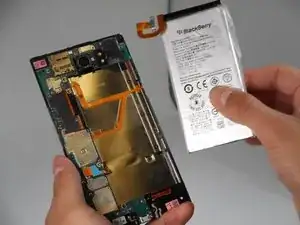
Battery
These are some common tools used to work on this device. You might not need every tool for every procedure.
The BlackBerry Priv, released in November 2015, was a big step for BlackBerry as it switched to Android, a move driven by former CEO John Chen. It had a slide-out physical keyboard and focused on security with tools like DTEK for checking app permissions. The phone tried to attract both business users and those looking for a mix of BlackBerry's security and Android’s flexibility. Its design appealed to fans of classic BlackBerry phones while providing access to a wide range of apps.
However, the Priv had its downsides. Some users found the battery life disappointing, and the camera, despite its high megapixel count, didn’t perform as well as some competitors. Plus, slower software updates and a higher price compared to other smartphones made it less appealing. Users generally liked the tactile keyboard but often mentioned performance issues. Comparisons with other phones from that time highlighted both its strengths and weaknesses, and the broader smartphone market in 2015 added context to its launch amid the rise of touchscreens. The Priv also left a mark on BlackBerry’s later strategies, showing a unique mix of features aimed at security-minded users. Overall, while the Priv aimed to blend BlackBerry’s legacy with modern features, it struggled to make a significant impact in a crowded market.
The BlackBerry Priv features a 5.4-inch (diagonal) curved glass touchscreen, slightly wrapping around the edges. The screen can slide upward, revealing a physical QWERTY keyboard beneath. The back cover has a textured, rubberized finish, while the frame is crafted from metal with rounded edges. On the left edge, you'll find the volume controls while the power button is located on the right edge. The camera module on the back is slightly raised, housing an 18-megapixel lens along with a dual-tone LED flash. The Priv supports microSD cards, accessible through a slot on the top edge.
Body
Display
Platform
Memory
Main Camera
Selfie Camera
Communications
Battery